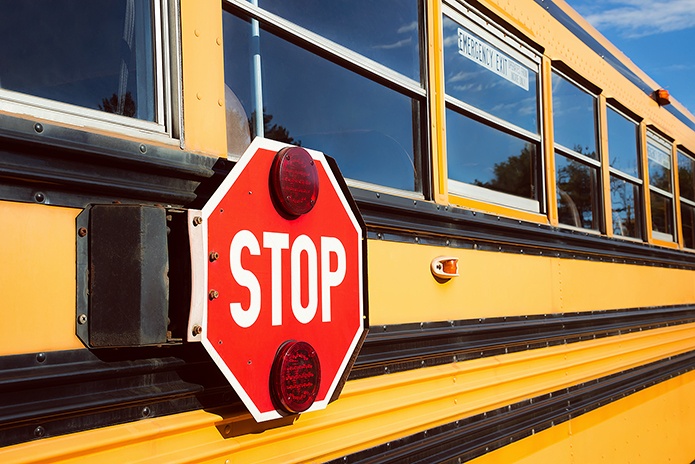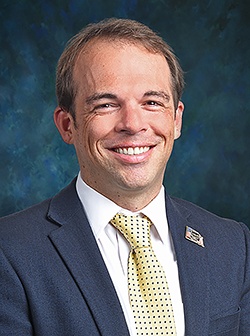
School BUSRide spoke with Dr. Kayne Smith, director of transportation at Cypress-Fairbanks Independent School District (ISD) in Houston, Texas, and president for the Texas Association for Pupil Transportation. Smith discussed the top issues facing pupil transportation in Texas, adjusting to post-COVID operations, the impact of virtual learning, and the benefits of information sharing.

What are the top issues facing your community’s pupil transportation?
I think for us, like many others, it is making sure that we find the drivers and the staff needed to be able to provide invaluable daily services to our community. We have been able to retain our drivers, but we have seen a decrease in the number of applications coming in. Our retention rate is up, but it is concerning as we move forward. If we are not getting as many applications as we have in the past, there are vacancies to be filled.
How has Cypress-Fairbanks adjusted to post COVID-19 operations?
We started face-to-face on September 8, 2020, and we have been face-to-face ever since. We have provided the option for students to attend either face-to-face or utilizing the virtual program. But we have been busing students since September 8th. Our face-to-face numbers have increased from about 46 percent at the beginning of the year to about 80 percent now. We do require masks on the buses, and we perform sanitizing procedures once a day. We social distance where feasible and of course on the employee side, we had had to shut down our break rooms. We have minimized foot traffic through our facilities, required appointment-only visits with our supervisors and our area directors, and expanded our use of technology greatly. I would say that if there has been a silver lining in all of this, it has been the embrace of technology by our staff. We have had what I would consider a successful year given everything that has been going on.
How has the split between face-to-face and virtual learning impacted the district’s routing and bus deployment?
We have had to make adjustments throughout the year. Certain parts of our district were more virtual than face-to-face and vice versa, so shifting resources from various parts of the district. It has been a frequent routing task to make sure that we are balancing our loads effectively, putting the resources where we have the more face-to-face students and adjusting as we get more students coming in face-to-face. It has been an ongoing balancing act.
In every grading period, students have the opportunity to shift from virtual to face-to-face or vice versa. I joke that we have had multiple first days of school this year because there have been multiple instances where it is a student’s first day attending a physical campus. It has been an adjustment, tracking every data point that we can to make sure that loads are balanced, that we are remaining as efficient as possible. I have a great routing team that has been on top of it all year long.
As president of the Texas Association for Pupil Transportation, how did the events of 2020 affect your perspective as an association?
For the first time in our 47-year history, we had to cancel a conference. Of course, canceling a conference, canceling the state rodeo, those are not decisions that are made easily or taken lightly. However, with our summer conference being in June and COVID-19 then having only been around for six months, there was a lot of uncertainty. It was not a difficult decision to make for the safety and wellbeing of all of our association’s members.
What we have been able to do is provide more online opportunities. We began rolling out webinars to our members back in April 2020, fairly quickly after the physical campuses closed. We rolled out our first webinar and we did a virtual award ceremony over the summer that was livestreamed. We wanted to recognize our employees of the year, our vendor of the year, and all the individuals across the state who had stepped up and shined in our industry. We began rolling out some online classes as well, and we have been doing that for the past several months along with webinars.
It has resulted in somewhat of a transition because, in our industry, we enjoy the camaraderie. We enjoy the face-to-face interaction. We enjoy the networking. So going virtual has been a transition for everybody. My theme this year was United Apart, Stronger Together.
You have an informal information sharing with some of your neighboring districts in the Texas area. What kind of value do you derive from that?
The superintendents in our region have a collaborative network between the group of them. We have seen them come together in all the different severe weather situations that we have had, through the pandemic and any other situation that may arise.
We started coming together about once a week via Zoom and just talking about what our districts were doing and sharing ideas, sharing thoughts, sharing plans – because the great thing about education, the great thing about student transportation, is that you do not have to work in a silo. You have neighbors and colleagues who are willing to share ideas and thoughts about what they have done that has worked and what has not worked. Building those lines of communication and collaboration is invaluable in ensuring that you have the tools you need to be successful in your district.


